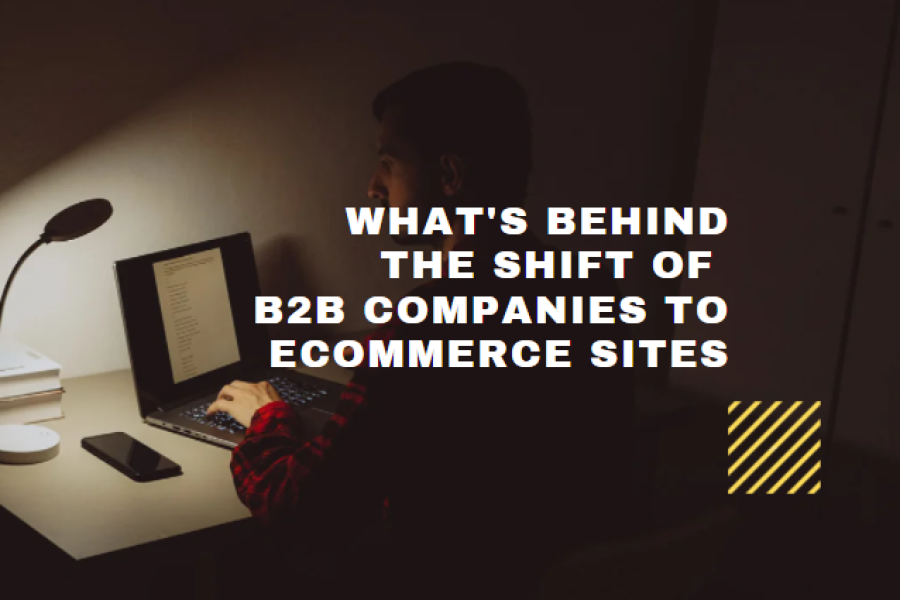Business-to-business, or B2B, is one of the fastest-growing segments for new and established companies. Forrester Research posited in January 2019 that in the United States, B2B e-commerce “will reach $1.8 trillion and account for 17% of all B2B sales in the U.S. by 2023.” So what is behind the shift of B2B companies to eCommerce sites, this article will give you a hint regarding this topic.
Access To A Larger Customer Base: More B2B Transactions Are Happening Online

Net Solutions conducted a study in January 2020 about the state of B2B e-commerce. It found that B2B takes cues from the business-to-customer (B2C) market and tries to emulate the latter’s growth strategies by adapting them.
Many B2B companies are moving online because their customer base is there, as well. The clients want knowledge about the products and services available to find the best items or software for their business purposes. Forrester Research found that 74% of B2B buyers conduct research online before purchasing. Education and valuable copy need to go hand-in-hand, and many B2B companies deliver on knowledge.
On this note, smartphones, tablets and other mobile devices are often used to make purchases. Net Solutions reveals that 91% of B2B customers use mobile devices to search for a product, and 25% use them to make a transaction. Thus, B2B companies need to have storefronts and web pages that are mobile-friendly and convenient to access. They need to implement upgrades to certain platforms to make them easier for users to access and organize their orders. An office manager, for example, will want to calculate future budgets and check past purchases accordingly.
Shipping for physical goods is another concern. B2B companies need to ensure that they can match Amazon for two-day shipping — or other benefits if they cannot meet that standard. This is where wholesalers can stand out by dropshipping, or delivering products only when a customer makes an order. Dropshipping not only reduces the pressures of shipping, but also the risk of accumulating unused inventory. Many e-commerce B2B services are working to fill this niche and increase efficiency within the marketplace.
Flexible Payment Options

Traditionally, businesses would have to pay for services and goods using cash, check or a credit card. While credit cards have benefits that allow owners and managers to build a business’s credit, they can also prove inflexible. Many B2B customers would rather avoid such inconveniences.
Thanks to the internet, e-commerce has a larger variety of payment options. In addition to bank account transfers and credit cards, office managers can often pay via PayPal, Venmo, Apple Wallet or other digital currencies. PayPal even offers credit cards so that a business can take advantage of the policy. This lowers potential barriers for inexperienced or newer entrepreneurs to enter certain fields, as well.
While each vendor has its drawbacks — for example, PayPal sometimes will freeze accounts for seemingly arbitrary reasons and take months to restore access to users — they also offer alternatives with convenience. For example, people can install Venmo on their phone and pay off vendors quickly. This flexibility means that a manager doesn’t have to rely on one source of payment for these transactions.
Many B2B Buyers Are Younger And Want A Personalized Experience

Gen X and Gen Y are some of the top users of B2B e-commerce. Gen X is the generation that came of age in the 1980s and early ’90s, followed by Gen Y, also known as millennials, with birth years between 1981 and 1996. Together, they are key players and business decision-makers.
B2B researchers, or potential customers who seek information on certain products and services to assess their value, can provide living proof that millennials are powerful within this type of business. In 2015, Google conducted a study and found that 46% of B2B researchers were between the ages of 18 and 34.
Many millennials want an enhanced customer experience when making a purchase online. They will seek as much knowledge as possible about the products that they desire for an office or digital workspace. That means an ideal storefront will be easy to navigate on any digital device, with options for a fast transaction and efficient record-keeping. A track record for purchases allows them to make informed decisions, which increases their confidence in the company providing the history.
One potential solution is to either design or outsource the creation of an app for your business. Many corporations have these apps, such as Whole Foods, with QR codes to allow for efficient checkout at grocery stores.
Conclusion
As we enter the 2020s, grow within global B2B. With technology expanding, you have ample chances to gain a higher market share. Trust your B2B marketers and their research reports to help you reach a higher level.








